The reactivity of zirconium on silicon nitride enhances the conversion of propane into propylene, a key commodity chemical needed to make polypropylene. This finding hints at the reactivity researchers might achieve with other nontraditional catalysts.
Tag: Scientific User Facilities
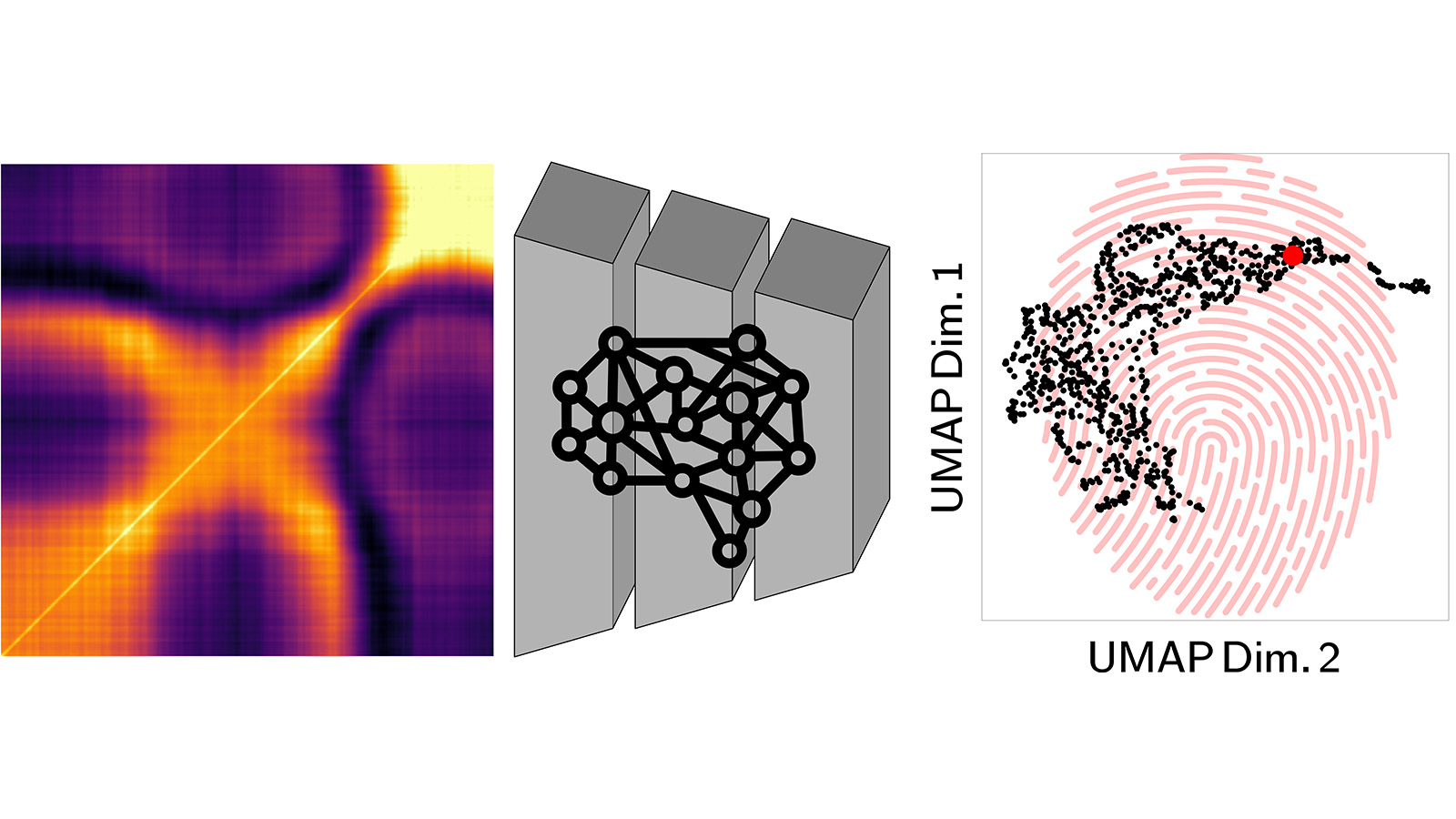
Scientists develop new artificial intelligence method to create material ‘fingerprints’
Researchers at the Advanced Photon Source and Center for Nanoscale Materials of the U.S. Department of Energy’s Argonne National Laboratory have developed a new technique that pairs artificial intelligence and X-ray science.
Argonne develops new kind of AI model for weather prediction
Argonne environmental and computer scientists have developed a new kind of model, called a foundation model, to predict weather and eventually climate.
Not all calcite crystals are as perfect as they appear
Researchers used complementary imaging techniques to explore the impact of synthesis approaches on the nanoscopic internal structure of apparently perfect calcite particles, which has implications for contaminant sequestration and carbon storage.
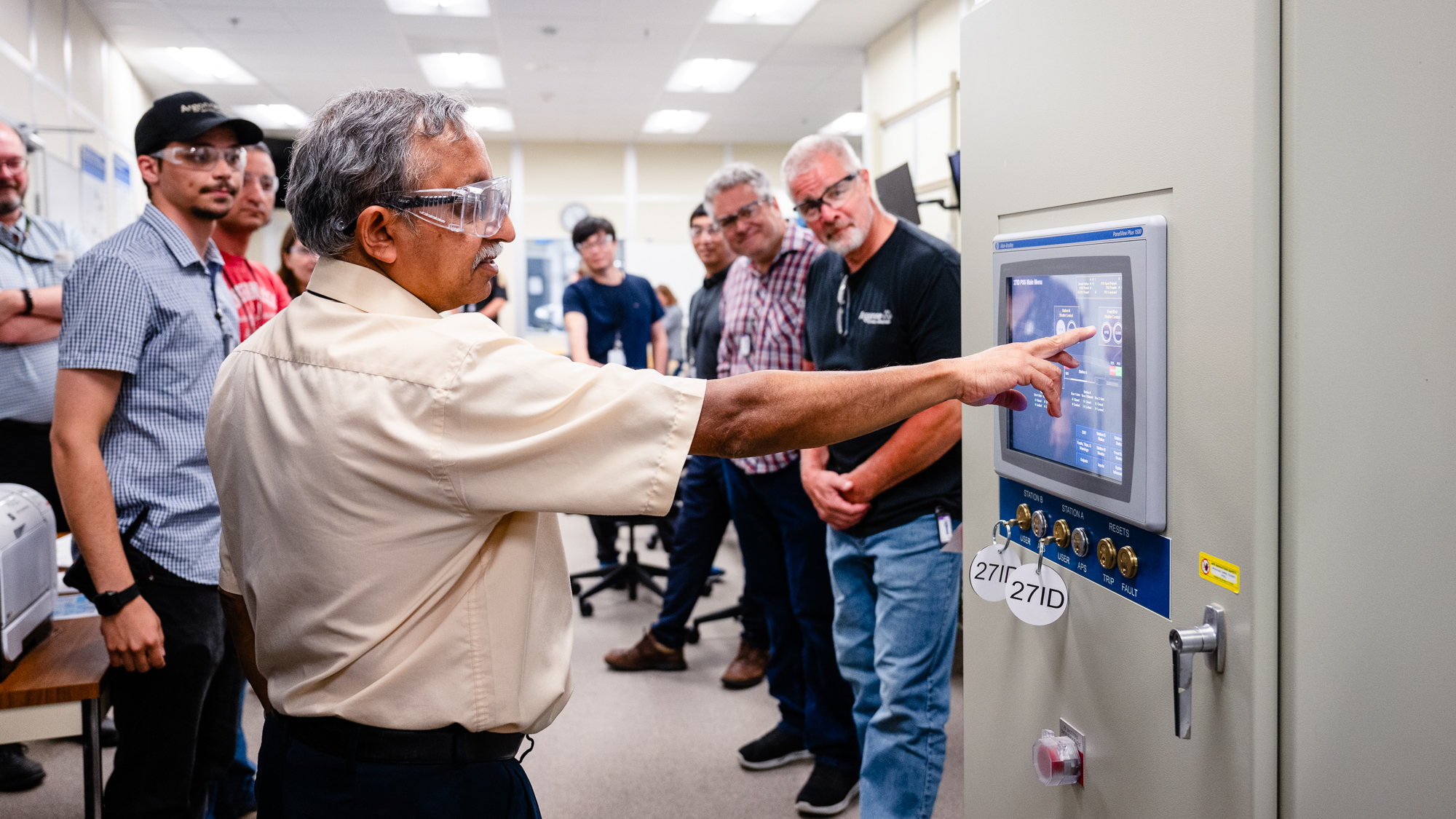
Shine on: Upgraded Advanced Photon Source sees first X-ray light for science
After a decade of planning and a year of removal, installation and commissioning, the upgraded Advanced Photon Source has delivered its first photons to a scientific beamline. This paves the way for the start of a new era of scientific discovery at the upgraded facility.
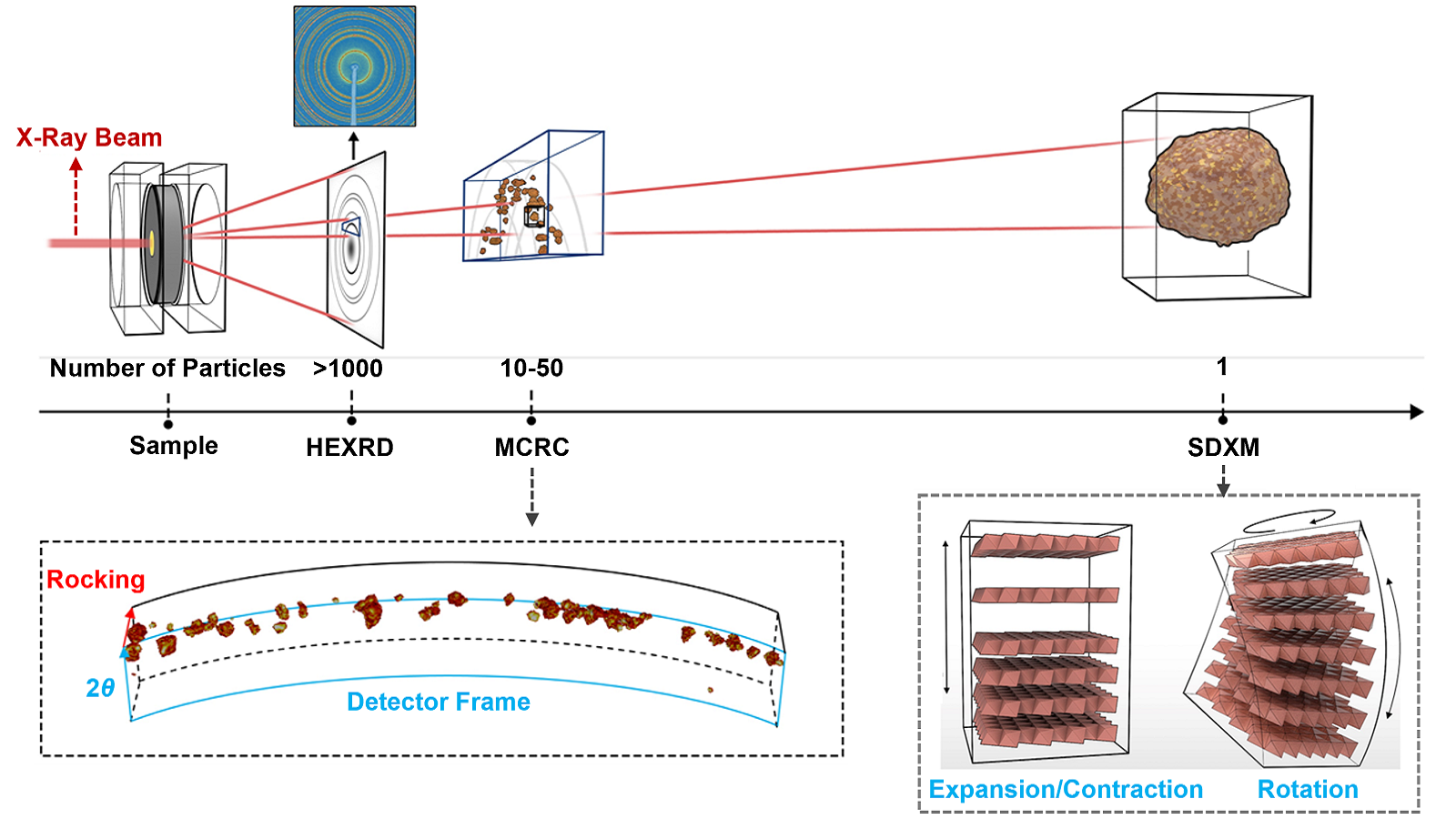
Unlocking the mystery behind the performance decline in a promising cathode material
Researchers at the Argonne National Laboratory have discovered the main reason why and how one of the more promising new cathode materials degrades with repeated cycling of lithium-ion batteries. The team’s new analysis method was key to the discovery.
Argonne engineers develop one-of-a-kind instruments and facilities for scientific discovery
A group of engineers at Argonne National Laboratory is uniquely equipped to design, model and install experimental systems that enable pioneering scientific research.
Aurora supercomputer heralds a new era of scientific innovation
Argonne’s Aurora supercomputer represents a leap forward in scientific research. Offering unprecedented speed and power, advanced hardware, and AI capabilities, Aurora ushers in a new era of supercomputing to revolutionize the way scientists conduct research and achieve breakthroughs.
Argonne’s Aurora supercomputer breaks exascale barrier
Argonne’s Aurora system has officially entered the exascale era with its latest submission to the Top500 list of the world’s most powerful supercomputers.
Keane wins 2024 Gopal K. Shenoy Excellence in Beamline Science Award
Denis T. Keane, of Northwestern University, was named the 2024 recipient of the Gopal K. Shenoy Excellence in Beamline Science Award which recognizes beamline scientists for their contributions to research or instrumentation at the Advanced Photon Source.
Scientists pioneer autonomous robotic method for studying liquids suspended in air
Researchers at the U.S. Department of Energy’s Argonne National Laboratory have used robots and artificial intelligence to dramatically speed up data collection and analysis in X-ray studies of liquids.
Argonne’s Ilke Arslan named fellow of the Microscopy Society of America
Ilke Arslan, the director of Argonne’s Center for Nanoscale Materials, has been inducted as a fellow of the Microscopy Society of America.
New features available on the National Virtual Climate Laboratory portal
The National Virtual Climate Laboratory is a comprehensive web portal for climate science projects. It has new website features for students, faculty and researchers including career opportunities, a news section featuring climate and student news, and a calendar of workshops and events.
First-ever atomic freeze-frame of liquid water
A multi-institutional team reports the first look at electrons moving in real time in liquid water. Their findings could affect studies of radiation-induced processes, such as those in space travel, cancer treatments, nuclear reactors and legacy waste.
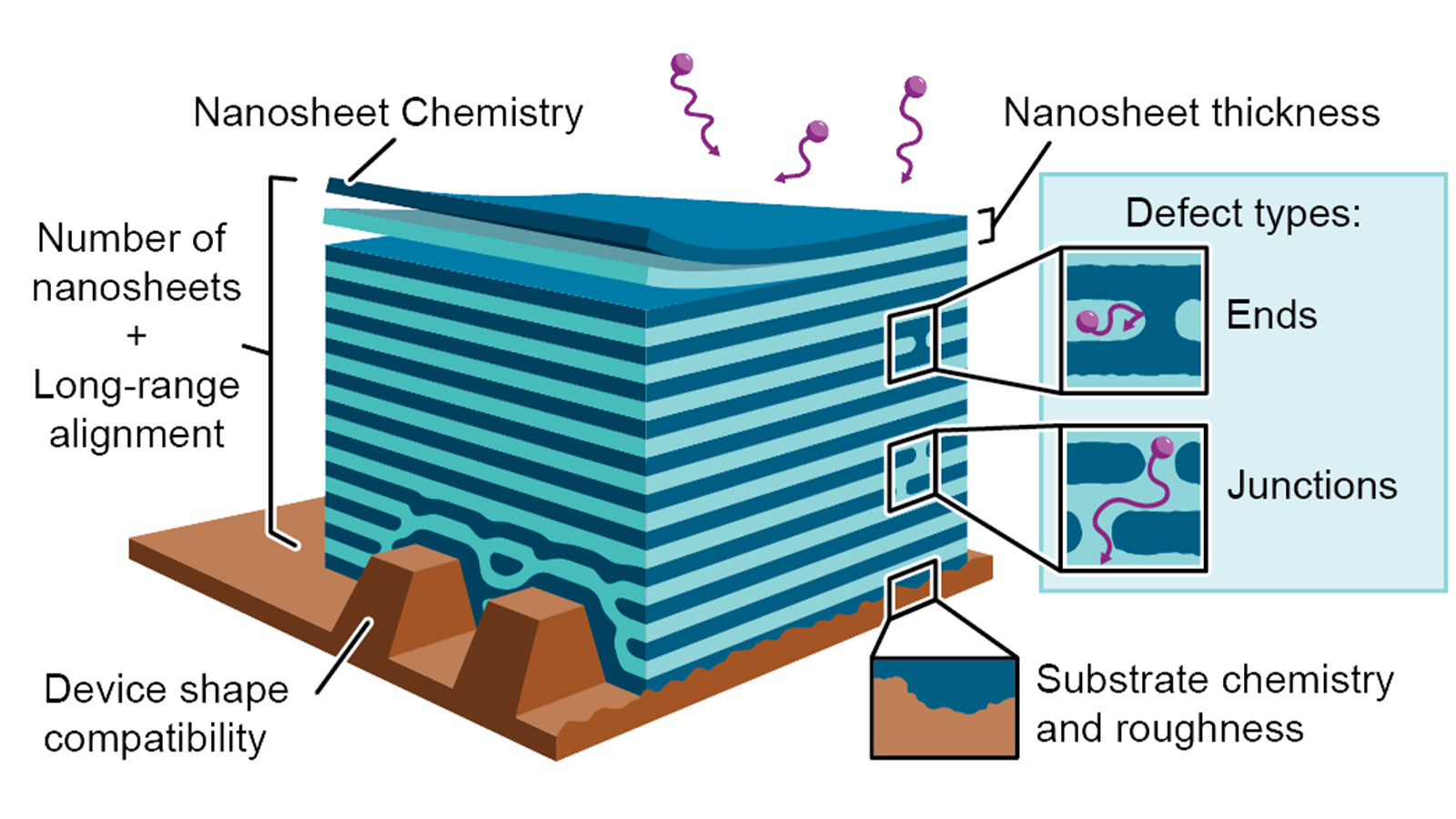
Argonne scientists help scale up nanomaterials for sustainable manufacturing
Scientists using Argonne’s Advanced Photon Source have developed a multipurpose nanomaterial to aid in sustainable manufacturing.
Department of Energy funds new center for decarbonization of steelmaking
The DOE recently announced $19 million in funding for Argonne to lead the Center for Steel Electrification by Electrosynthesis. The center’s aim is to develop a cost-effective process for steel making that would greatly reduce greenhouse gas emissions.
High school students working with Argonne and Fermilab qualify for the NAACP Olympics
Under mentorship from Argonne and Fermilab experts, six high school students went on to participate in the Afro-Academic, Cultural, Technological and Scientific Olympics in Boston in July.
Teacher institute empowers teachers to bring data science to the classroom
This June, Argonne launched the first Data Science Institute for High School Teachers, helping Chicago teachers learn about and practice data science, which they will apply in their own schools.
Rising “snow” deep in the Earth
Researchers have gained important insights about mysterious structures 1,800 miles below the Earth’s surface—and how they may be connected to volcanoes.
Ready, set, upgrade: Advanced Photon Source’s overhaul is underway
The Advanced Photon Source at Argonne National Laboratory is beginning the installation phase of an upgrade that will enable new breakthroughs in a variety of sciences.
Speaking my language: Robert Winarski’s background helps him coordinate beamline installation for the Advanced Photon Source Upgrade
With the year-long shutdown underway, the Advanced Photon Source Upgrade project is in the midst of building seven new beamlines, constructing the infrastructure for two more, and updating several more existing beamlines. Robert Winarski is coordinating all of this work, and his background as a scientist who has constructed beamlines is key to his success.
Study reveals workings of promising Copper deficiency drug
Research at Argonne National Laboratory’s Advanced Photon Source has revealed a key mechanism behind a promising drug for copper deficiency disorders.
Argonne’s self-driving lab accelerates the discovery process for materials with multiple applications
Researchers have a new scientific tool called Polybot, combining the power of artificial intelligence with robotics. This autonomous discovery lab is leading the way in transforming scientific research on sustainable and bio-inspired microelectronics.
Argonne aids in the fight against one of the world’s most ubiquitous human viruses
With the help of Argonne National Laboratory, Epstein-Barr Virus researchers identified a viral protein as a target for antiviral and vaccine development, as well as an antibody that might benefit the immunocompromised.
Cai wins 2023 Gopal K. Shenoy Excellence in Beamline Science Award
Zhonghou Cai is the 2023 recipient of the Gopal K. Shenoy Excellence in Beamline Science Award. The annual award recognizes active beamline scientists at the Advanced Photon Source for significant contributions to research or instrumentation and support of the beamline user community.
Dixit receives 2023 Rosalind Franklin Young Investigator Award
Marm Dixit, of Oak Ridge National Laboratory, was named the 2023 recipient of the Rosalind Franklin Young Investigator Award given by the Advanced Photon Source user organization which recognizes important scientific or technical accomplishments at the facility by a young investigator.
How Argonne is pushing the boundaries of quantum technology research
With its Department of Energy National Quantum Information Science Research Center (Q-NEXT) and its quantum research team, Argonne is a hub for research that could change the way we process and transmit information.
Using X-rays and additive manufacturing to print tough materials
In a breakthrough for industrial manufacturing, scientists using the resources at Argonne were able to consistently produce 17-4 PH steel, one of the world’s toughest materials, using X-rays and the additive manufacturing process.
Scientists create antibody ‘cocktail’ to fight deadly Lassa virus
A group of researchers have used the Advanced Photon Source to look at monoclonal antibodies to subvert the “shield” of the Lassa virus, potentially paving the way for new therapies.
Sixbert Muhoza studies a new class of materials that could help fight climate change
A scholar in Argonne’s Applied Materials Division, Sixbert Muhoza is studying a new class of materials called MXenes that could improve batteries and help convert carbon dioxide to fuel.
Laser shots at National Ignition Facility could spark additional discoveries in astrophysics
Using the Argonne Tandem Linac Accelerator System (ATLAS), a team of scientists is studying the environment created during laser shots at the National Ignition Facility to better understand its potential as a testbed for nuclear astrophysics research.
An innovative twist on quantum bits: Tubular nanomaterial of carbon makes ideal home for spinning quantum bits
Scientists develop method for chemically modifying nanoscale tubes of carbon atoms, so they can host spinning electrons to serve as stable quantum bits in quantum technologies.
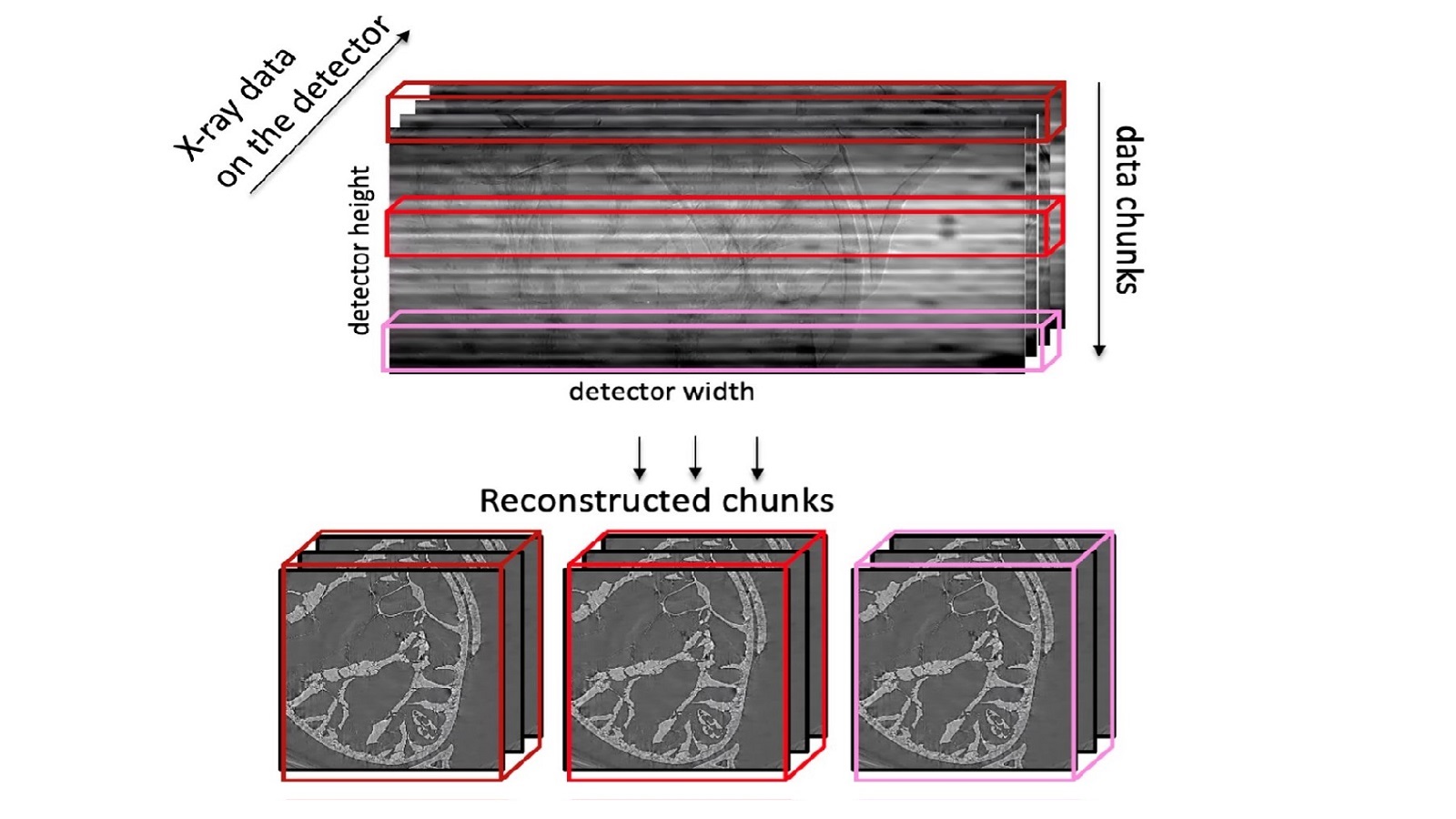
Argonne scientist develops new X-ray data reconstruction method
A new software package developed by Argonne will help scientists reconstruct data from X-ray tomography experiments at the Advanced Photon Source up to 30 times faster than current methods.
Diversifying Argonne’s high performance computing workforce
Argonne is focused on building a more diverse workforce in high performance computing (HPC). Sustainable Research Pathways for HPC, an internship & mentoring program, connects students from underrepresented groups with scientists to jump start careers.
Argonne training program introduces AI for science to a new crowd
The Intro to AI-Driven Science on Supercomputers training series gives students hands-on experience using the Lab’s high performance computing resources.
New design for lithium-air battery could offer much longer driving range compared with the lithium-ion battery
Scientists have built and tested for a thousand cycles a lithium-air battery design that could one day be powering cars, domestic airplanes, long-haul trucks and more. Its energy storage capacity greatly surpasses that possible with lithium-ion batteries.
Artificial intelligence reframes nuclear material studies
Nuclear energy provides a fifth of total U.S. electrical power and half of its clean electricity. With new results from one scientist’s study of computer vision at Argonne National Laboratory’s IVEM facility, it may do even more.
ComEd report shows how science and supercomputers help utilities adapt to climate change
Shifting climates are causing utility companies to take a closer look at the current and future power needs of their customers. Northern Illinois’ ComEd and Argonne National Laboratory used science to glimpse the future.
Lithium-sulfur batteries are one step closer to powering the future
An Argonne research team has built and tested a new interlayer to prevent dissolution of the sulfur cathode in lithium-sulfur batteries. This new interlayer increases Li-S cell capacity and maintains it over hundreds of cycles.
Scientists turn single molecule clockwise or counterclockwise on demand
Argonne scientists report they can precisely rotate a single molecule on demand. The key ingredient is a single atom of europium, a rare earth element. It rests at the center of a complex of other atoms and gives the molecule many practical applications.
Scientists enhance stability of new material for solar cells
Scientists at the University of Missouri used Argonne’s Advanced Photon Source to identify the structure of a perovskite material grown using chemical vapor deposition, potentially representing a breakthrough for solar cells.
Nuclear popcorn: Heavy nucleus changes shapes at different energies
A research collaboration between Argonne and the University of North Carolina at Chapel Hill produced a paper that examines how the nucleus of nickel-64 reacts when exposed to energy.
Skin-like electronics could monitor your health continuously
Researchers from Argonne National Laboratory and the University of Chicago’s Pritzker School of Molecular Engineering are developing skin-like electronics paired with artificial intelligence for health monitoring and diagnosis.
4 science advances coming in the exascale era
To celebrate Exascale Day, Argonne highlights some of the projects poised to make scientific breakthroughs on the upcoming Aurora exascale computer. Their research explores the spread of cancer, fusion energy, brain mapping, particle physics and more.
5 big strides from Argonne towards nuclear energy’s future
Nuclear energy is an exciting carbon-free energy source. Recent work at Argonne National Laboratory shows how nuclear energy can improve and why it is such an enticing resource in the fight against climate change.
Scientists use machine learning to accelerate materials discovery
Scientists at Argonne National Laboratory have recently demonstrated an automated process for identifying and exploring promising new materials by combining machine learning (ML) and high performance computing.
Helping companies improve energy efficiency through high performance computing
The U.S. Department of Energy (DOE) has awarded DOE’s Argonne National Laboratory with $600,000 in federal funding to work on two new projects that will advance cutting edge manufacturing and clean energy technologies.
Powered by artificial intelligence, Argonne technology eyes bird activity at solar facilities
The World Health Organization says monkeypox is a global health emergency. Scientists use ultrabright X-ray beams and diffraction imagery to understand how poxviruses behave. This can accelerate development of critical vaccines and treatments for monkeypox and other poxviruses.
Secrets from space: Advanced Photon Source helps illuminate the journey of a 4 billion-year-old asteroid
An international collaboration of scientists has published results of their studies into the makeup and history of asteroid 163173 Ryugu. These results tell us more about the formation of our solar system and the history of this nearby neighbor.
New cathode design solves major barrier to better lithium-ion batteries
New method for preparing cathode materials eliminates stumbling block to better lithium-ion batteries. New structure for cathode particles could lead to new generation of longer-lasting and safer batteries able to power vehicles for longer driving ranges.